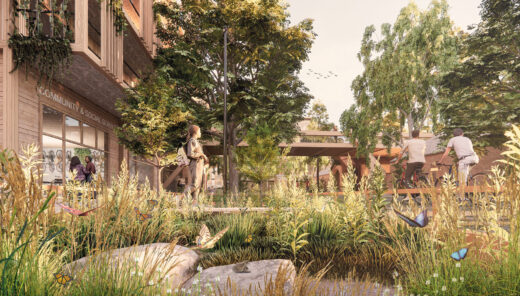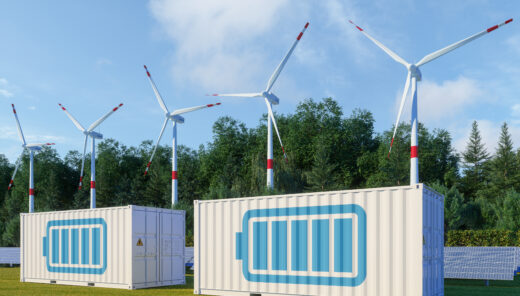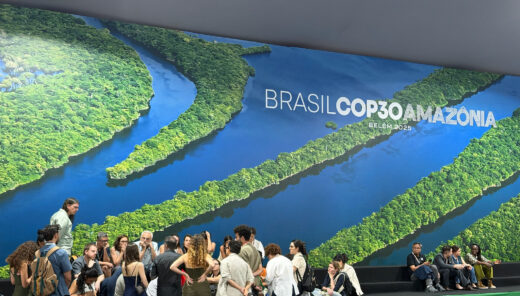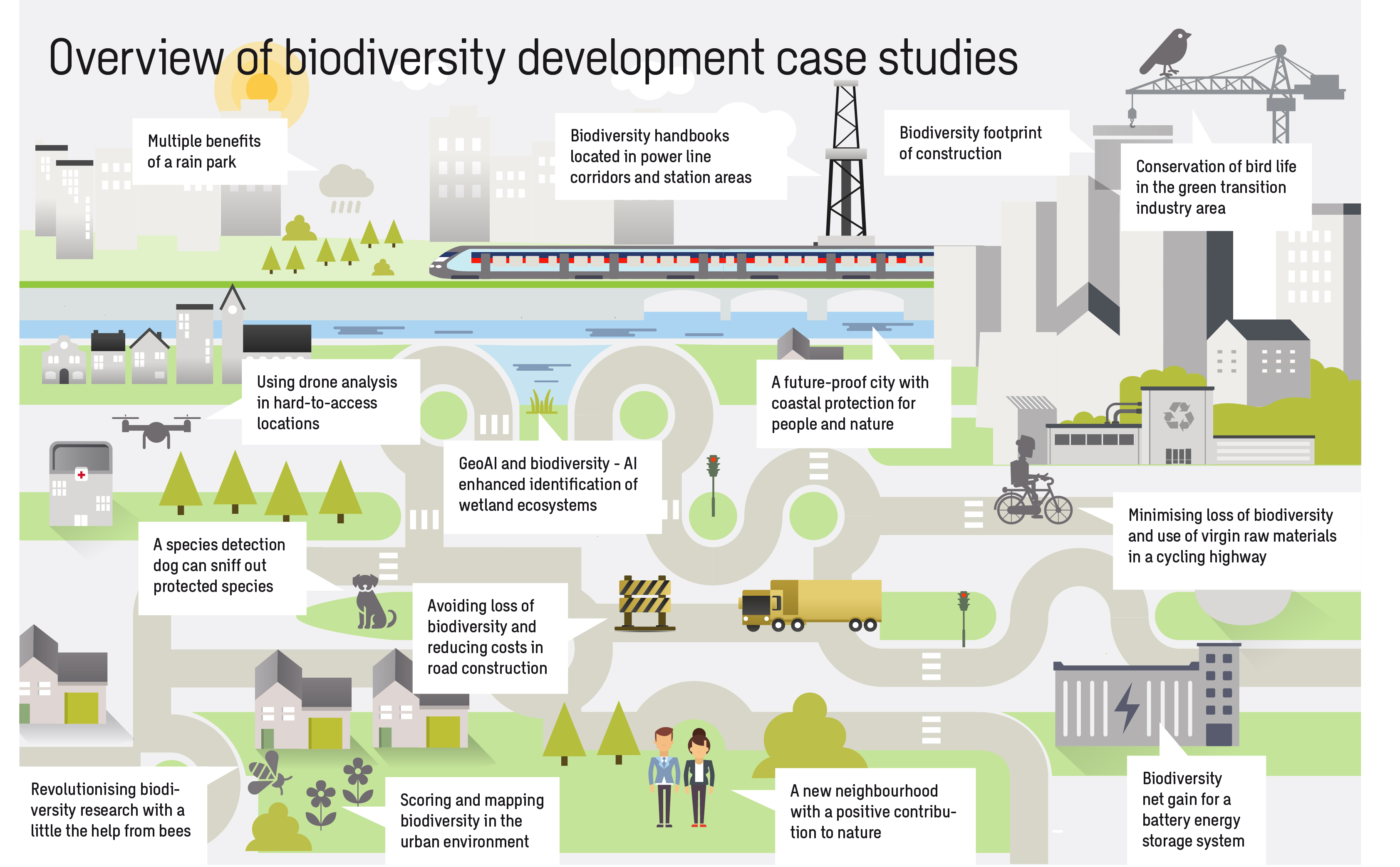Sweco Report: How European developers use innovation to recover biodiversity in the built environment
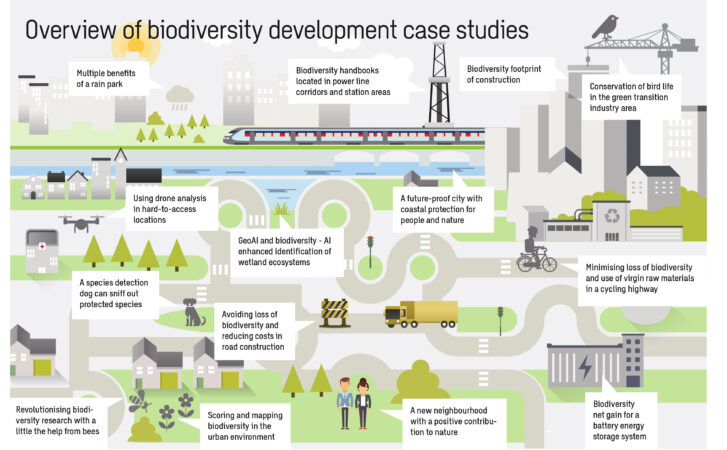
A new report from Sweco showcases practical, scalable solutions that help developers embed biodiversity into infrastructure projects across Europe – from bees collecting eDNA, working dogs, GeoAI and drones to blue-green infrastructure. Drawing on client work, the Sweco report showcases how technology, planning and design of the built environment can drive biodiversity recovery.
Europe faces a major infrastructure upgrade estimated at EUR 9 trillion to 2040 (Sweco estimation based on World Bank data*), making it vital to integrate nature with new energy, transport, water and building projects.
Sweco’s new report says the 2030 global biodiversity targets** demand immediate change and that financial and regulatory requirements are pushing developers toward integrated ecological solutions.
“While traditional infrastructure projects have often been designed with a focus on function and efficiency, modern infrastructure should also reconnect ecosystems. The tools are available, and we can move from knowledge to action to ensure that biodiversity is included in Europe’s infrastructure boom,” says Piia Pessala, Executive Director in biodiversity at Sweco and one of the authors of the report.
Using recent client projects in energy, transport, industry and buildings across Europe, the report explains how construction companies, property and real estate developers and their clients can incorporate biodiversity into upcoming infrastructure development projects.
“We have drawn on our collective experience from developing solutions together with our clients to produce a report that offers practical guidance for public and private development actors and outlines how to address biodiversity with effective and coordinated action. Through better planning, collaboration, financing and integration of biodiversity at every stage of urban development, we show that all actors can innovate, create business value and contribute to a nature positive agenda,” says Andreas Gyllenhammar, Chief Sustainability Officer at Sweco.
Selected client cases include nature inventories, measurement and implementation, integrating biodiversity at every stage of development:
- Bees for eDNA (Finland): Bees collect pollen for eDNA analysis to monitor plant diversity and guide pollinator-friendly tramway construction.
- GeoAI for Fens (Sweden): Machine learning is being used to map alkaline fens and create a geodatabase enabling the prioritisation of conservation efforts.
- Dogs for Dormice (Germany): Trained dogs locate the nests of protected species (hazel dormouse) during wind turbine construction to prevent harm.
- Drones for Mapping (Netherlands): Drones mapped a power grid route to locate protected bird nests and provide non-disruptive ecological data.
- Rain Park (Lithuania): Blue green infrastructure that manages stormwater while concurrently delivering public amenities and biodiversity.
- Biodiversity Footprint of Construction (Denmark): Piloted the integration of biodiversity impacts into design, placing biodiversity on a par with CO2 as a design parameter.
Drawing on Sweco’s knowledge and experience from ongoing client projects across Europe, the report also presents nine practical solutions together with guidance for project owners, including design principles and methods for integrating biodiversity into decision-making.
Sweco’s recommendations for scaling up biodiversity action:
1. Adopt a biodiversity-first approach: Prioritise biodiversity on an equal footing with safety and cost from the very start.
2. Involve ecological expertise early: Engage ecologists at the pre-feasibility stage to ensure designs reflect ecological realities.
3. Foster interdisciplinary collaboration: Mandate collaboration between biologists, engineers and planners to create balanced solutions.
4. Integrate multiple functions: Design solutions that combine, for example, water management, mobility, recreation and ecological benefits.
5. Design and build nature-inclusively: Scale up ecological landscaping, using native plants, green roofs and connected green-blue areas.
6. Strengthen knowledge transfer: Improve resource allocation and collaboration across all teams throughout the project lifecycle.
7. Engage and empower citizens: Involve the public through citizen science and local actions to expand nature networks.
8. Finance and monitor for long-term impact: Integrate biodiversity into financial planning and use consistent metrics and technology for monitoring.
9. Embrace tailored solutions: Focus on context-specific solutions for each ecosystem, avoiding a one-size-fits-all approach.
Press photos
- Overview of biodiversity development case studies (Sweco)
- Piia Pessala, Executive Director in biodiversity at Sweco
- Andreas Gyllenhammar, Chief Sustainability Officer at Sweco
* Sweco’s calculation, based on Global Infrastructure Outlook data for 2025–2040 and converted from USD to EUR, estimates an infrastructure investment need of EUR 8.6 trillion (rounded to EUR 9 trillion). Source: https://outlook.gihub.org/
** The Global Biodiversity Framework (GBF) aims to halt and reverse biodiversity loss by 2030, with ambitious targets such as conserving 30 per cent of land and water and restoring 30 per cent of degraded ecosystems. At recent COP 16 talks, countries agreed to mobilise at least USD 200 billion per year by 2030 to help countries conserve biodiversity – marking a significant step forward.
About Urban Insight by Sweco
Urban Insight is a series of insight reports written by Sweco experts on various aspects of urban development from a citizen perspective. This report is the third in a series of reports that focus on biodiversity. The full report is available here.
Previous Sweco reports on biodiversity during 2025:
Attached information
Anna Elisabeth Olsson
Head of Press and Public Affairs